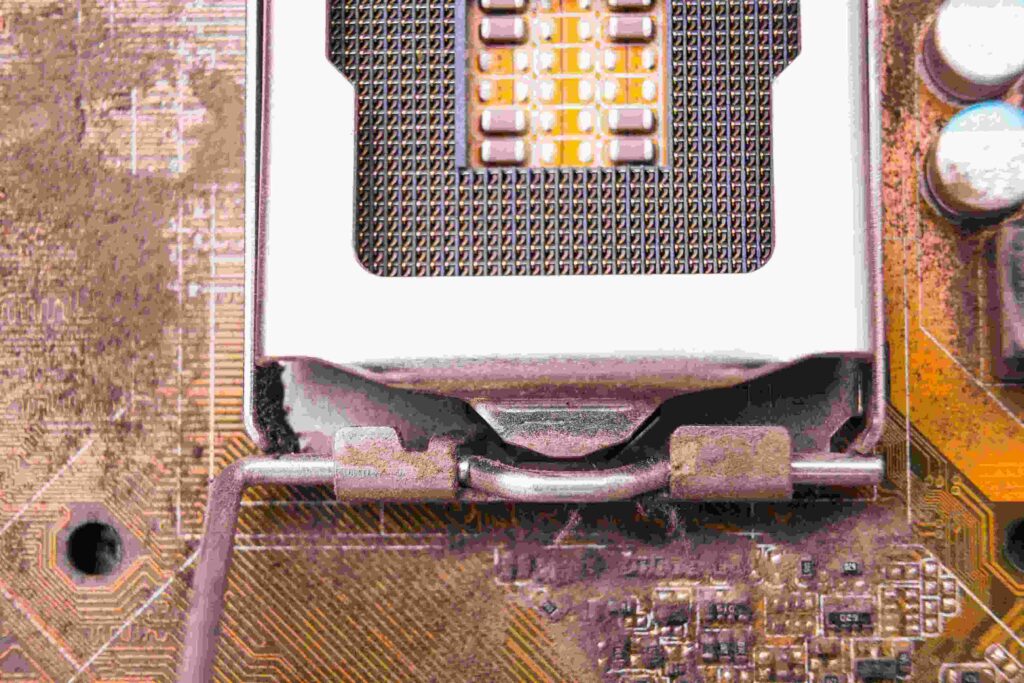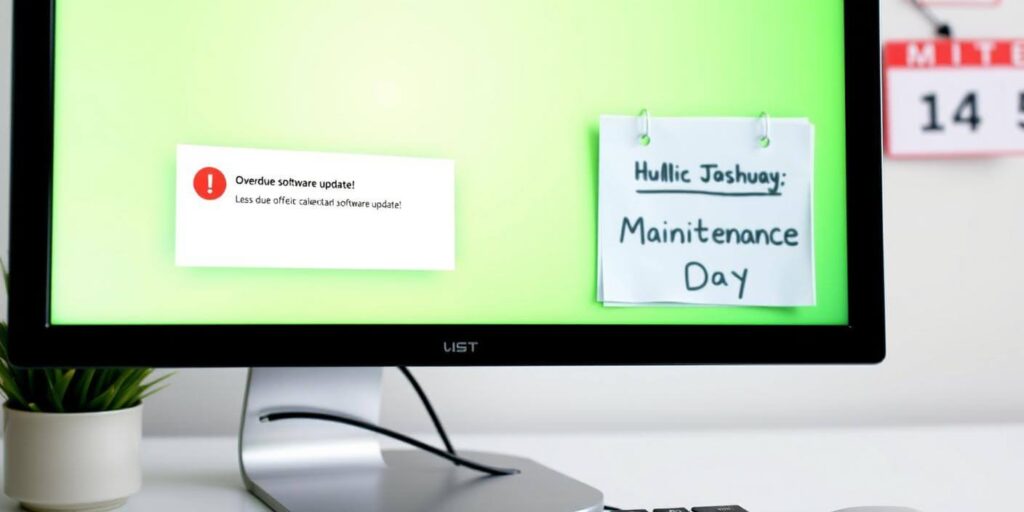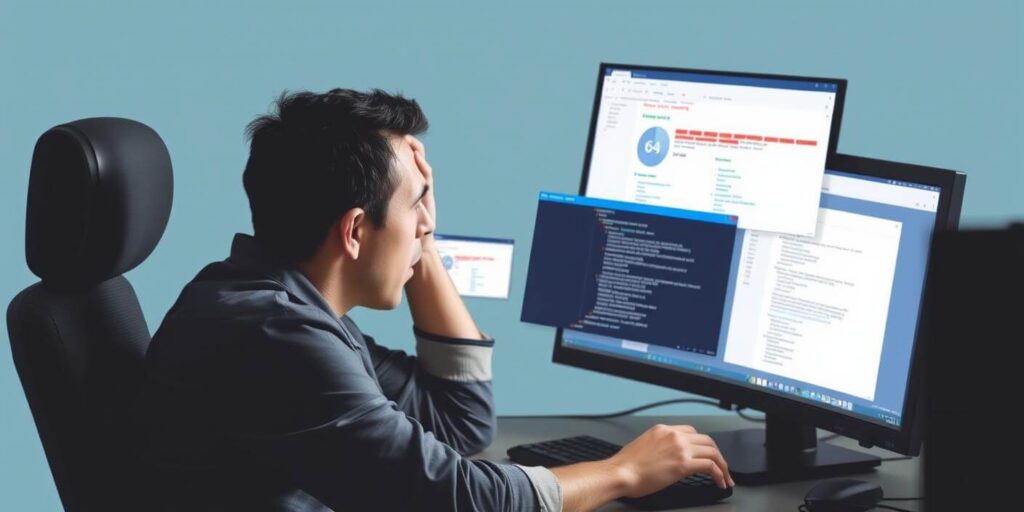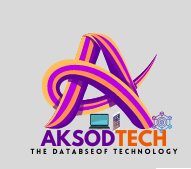We often take a lot of things for granted, like systems, be it the computer or the server, or for that matter, even household appliances. We expect it to work like a well-oiled machine day after day, without a second thought about what can go wrong with it. Systems are very fragile and can easily get destroyed by a variety of factors, some of which at first may appear trivial. In this article, we’ll look at six things that could wreck a system if left to run wild. From electricity to security, we’ll talk about it all.
What Do We Mean by “Destroying a System”?
“Destroying a system” means far more than just stopping its operation. It involves severe and often unrecoverable damage that can make the system fail. Imagine a situation in which a very important computer suddenly doesn’t want to power up or a server goes down, taking along very important data. These are the nightmares for people who rely on the system for work, entertainment, or anything in between.
Why You Should Know the System Dangers
Half of the battle is in the awareness. Knowing what can potentially wreck your system allows you to take action to prevent these dangers. Whether running a business network or just trying to keep your home computer running smoothly, knowing these risks is paramount.
Purpose of This Article
Here’s the simple definition of what we are going to be talking about arming you with a synopsis of six typical threats that attack your systems and wreck them. We will break each down, explaining how it could bring damage, and give practical tips on how to avoid them. Ready? Let’s start!

First: Electricity: The Silent System Killer
Electricity is what keeps our digital world running, yet at times it might also be the biggest enemy of a system. Electricity, when going haywire, does it in a big way.
The Meanings and Implications of Power Surges
A power surge is a sudden increase in voltage in electricity. This may last a very slight half-second, but that is long enough to wreak damage on the subtle components of the system. It’s like a lightning bolt hitting your system; it’s over before you know it, but the damage is already done.
Power surges can be caused by numerous sources, such as a lightning strike, faulty wiring, and even the sudden return of electricity after a blackout. Most probably, a surge is what caused a gadget to fail after a storm.
Hazards of an Unstable Power Supply
An unstable power supply can be as bad as a sudden surge. Either too high or too low, voltage fluctuations put stress on your system’s power supply unit and other parts, leading over time to failures. That’s like running on uneven terrain; it’s only a matter of time until something gives out.
How to Protect Your System from Electrical Damage
Fortunately, there are methods available that can help to protect your system from electrical accidents. Here’s what you can do:
- Use a surge protector: This is the first line of defense against power surges. A good surge protector can absorb excess voltage and prevent it from passing onto your system.
- Invest in an Uninterruptible Power Supply (UPS): A UPS will provide backup power in case the lights go out. It ensures the regulation of voltage so that the power supply will be consistent.
- Regular Electrical Checks: Have an electrician check over your wiring if you live in an old building. Faulty wiring can be responsible for power surges and unstable voltage.
With these precautions, you can minimize the potential electrical damage to your system.

Second: Liquid: The Catalyst of Destruction for Everything Digital
If electricity is a silent killer, liquid is an obvious one. There’s no mistaking the damage liquid can do when it comes into contact with your system.
How Liquid Spills Can Wreck Your System
Water and electronics do not mix together. This is quite literally, as water can immediately short out all the sensitive internal parts of your system if it spills into it. The liquid flows right into the circuit boards, closes the connections, and your system is gone.
It’s not just water, either. Coffee, soda, juice, or any liquid can wreak havoc on your system. And the worst part? Liquid damage often voids warranties, leaving you with an expensive repair or replacement bill.
Common Liquid-Related Accidents
Liquid-related accidents happen all the time, usually when you least expect it. Here are some of the most common scenarios:
- Spilled Drinks: It’s all too easy for a cup of coffee or glass of water to tip over if you’re working at a desk or relaxing on the couch.
- Rain Exposure: To most devices, rain may pose a particular threat, especially to your laptops, phones, and other portables.
- Leaky bottles in bags: If you carry your devices in water bottles, a leak could be disastrous.
Yes, Mbottlesre says that liquids don’t Damage Your Device
Yes, they say, “Prevention is the best cure.” Here is how to avoid liquid damage:
- Keep Drinks Away: Obvious, but easy; a good way of avoiding spills is to keep liquids at a “safe” distance from your system.
- Use waterproof cases: Portable devices can use waterproof or water-resistant cases. They save your device from rain or any accidental spills.
- Be cautious in wet environments: If you are taking your device to the poolside or beachside, then take extreme care. Waterproof cases or coverings are a necessity.
Conscientiously being aware of drink placement and liquid handling near your system will greatly lower their from liquid demise.

Third: Dust: The Slow Destroyer
Unlike electricity or liquid, dust doesn’t destroy your system in an instant. It’s a slow, sneaky problem that builds up over time.
How Dust Builds Up in Systems
Dust is pretty much everywhere, so it is nearly impossible to keep it out of your system. It sneaks in through vents, rests on components, and before you know it, your system is filled with a nice thick layer of grime.
Sometimes dust seems innocent enough, but it is not. When it accumulates, it interferes with the fans that cool your computer’s components, thermal sinks, or vents. As a result, the computer will not cool properly. The internal temperature will continue to increase and result in system components being stressed, eventually leading to overheating and system failure.
Consequences of Dust Buildup
- Overheating: Dust will block the flow of air to your system, which will lead to overheating. This would, over time, burn out the CPU, GPU, and other key components.
- System Slowdown: With lowered cooling efficiency, the system may, out of desperate attempts at cooling down, throttle its performance to avoid overheating and hence slow down.
- Component Failure: Continued use at high temperatures can lead to failure of such components faster than expected, thus leading to costly repairs or replacements.
Best Practices in Dust Prevention
Here are some tips for keeping a system free of dust.
- Regular cleaning: Detach the dust from your system and its components by blowing them with a cartridge of compressed air. Do this about every few months, or more if you live in a dusty environment.
- Keep your environment clean: Cleaning around your system is important for minimizing the amount of dust that accumulates in your system.
- Use Dust Filters: Fit dust filters to the system’s intake vents to keep dust out before it enters. Clean these filters regularly.
After all, a little bit of effort can go a long way toward preventing dust from slowly destroying your system.

Fourth: Lack of Maintenance: The Overlooked Threat
It’s easy to forget about system maintenance until something goes wrong. However, neglecting regular maintenance is one of the quickest ways to destroy your system.
Why regular maintenance is crucial
Systems, like cars, need regular maintenance to stay in good working condition. Without it, Small problems can develop into big ones. If this is allowed to continue over a while, system failure and data loss are common occurrences. This will cost you more for repairs.
Common Maintenance Errors and Their Implications
Below are the common mistakes in maintenance and how they may cause damage to your system:
- Not Upgrading Your Software: If you do not update, you may be leaving your system exposed to many security threats and other bugs that might cause it to crash or slow down.
- Not Backing Up Data: If you do not back up on a regular basis, you risk losing crucial data whenever your system fails.
- Not Inspecting Hardware: If outdated components, like hard drives or power supplies, are not inspected and replaced, the system could malfunction at any time and without notice.
Creating an Effective Maintenance Schedule
Establish a regular maintenance schedule for your system to ensure trouble-free operation:
Schedule regular checkups, perhaps every couple of months, to see if your system is showing any signs of trouble. Be on the lookout for things like dust buildup, software updates, and hardware performance.
- Automate Backups: Use backup software so that data gets backed up at specified intervals automatically. That way, you will have a duplicate copy of your critical files in case something goes wrong.
- Keep updated: Whenever an upgrade for software is available, install it. This will keep your system secure and running efficiently.
By having a maintenance routine, you avoid those small issues that snowball into big ones, potentially destroying your system.

Fifth: System Capacity: When Overload Leads to System Crash
Every system has its limits, and testing those boundaries can be detrimental. Awareness of the capacity of your system and management is cardinal to preventing overload.
System Capacity and the Limits Explained
The system capacity refers to the maximum load your system can bear concerning processing power, storage, and memory. If these limits are overloaded, the system struggles to catch up, eventually slowing down, crashing, or causing permanent damage in extreme cases.
What Happens When You Exceed Capacity
Exceeding the capacity of your system may lead to a variety of issues, such as those stated here:
- Performance Slowdown: When your system is too loaded, it won’t have space to perform tasks at maximum efficiency, causing slower performance and extended wait times.
- Frequent Crashes: Repeated overload of the system will make it repeatedly crash and result in lost work with possible data corruption.
- Hardware Damage: Running your system at peak levels all the time can make hardware components overheat and wear out quickly. This will render them useless eventually.
Tips on How to Manage and Optimize Your System Capacity
The following tips can be followed to ensure that you do not overload your system:
- Monitor the use of resources: Make it a point to see the system monitoring tools for CPU, memory, and storage usage. This can help you understand when you are reaching the limits of the system.
- Upgrade Components: If you consistently max out your system’s capacity, consider upgrading major components like the CPU, RAM, or storage to higher-performance versions.
- Optimize Your System: Periodically clean up junk files, shut down apps not in use, and hence speed up processes. This will reduce the load on the system.
Smart capacity management of your system can help avoid overload situations that may result in crashes or even damage.

Sixth: Security: The Invisible Menace
Security doesn’t seem to pose a physical danger to your system, but a security breach can be as damaging as any other danger that we have talked about.
The Role of Security in System Integrity
Security is not only an issue of keeping hackers out. Security is about ensuring the integrity of your system, that your data is safe, and that the system keeps going without any hitch.
How Security Breaches Can Damage a System
Security breaches entail several damages listed below:
- Loss of Data: Hackers may steal, corrupt, or even delete your data, resulting in heavy losses.
- System Damages: Malware such as viruses and ransomware are malicious software that can shut down the system and render it useless.
- Financial Loss: Recovery from a security breach can be costly. Sometimes, repairs and data recoveries involve legal fees.
Good Practices to Keep Your System Safe
To maintain the security of your system from these threats, apply the following best practices:
- Install Antivirus Software: Download and install some good antivirus software to detect malware and delete it before it damages your system.
- Keep Your Software Up-to-Date: Security patches are released periodically to fix vulnerabilities; hence, ensure you install the updates quickly.
- Use Strong Passwords: Weak passwords are easy to crack for hackers. Use robust, unique passwords for all your accounts, and change them regularly.
- Beware of Hoaxes: The most common purpose of spam emails and hoax sites is to provide access to hackers into your system. So, whenever any attachment or link comes through an email, check it thoroughly before clicking on it.
Conclusion
We have come a long way in this article, from electricity and liquids to dust-induced destruction and the invisible threats of security breaches. Independently, all these evils can annihilate a system; fortunately, with a little awareness and some proactive measures, you can safeguard your system against them.
Remember, as much as you take care of it, that is how strong your system will be. Regular maintenance, proper security measures, and keeping the limitations in mind will make your system last for many years in good working order. It shouldn’t take something going wrong before you start protecting your system.
Do you have any tips or experiences regarding damage to the system? Maybe you have had a near miss, or did it the hard way? Please do share your comments below, we will definitely help others keep their systems safe too!
Frequently Asked Questions
1. What are the most common factors for system failure?
Common causes of system failure include power surges, liquid spills, dust accumulation, maintenance negligence, system overload, and security breaches. These can be serious threats to the system if not managed properly.
2. What is the frequency of maintaining my system?
Do basic maintenance, such as dust cleaning and software updating, every couple of months. Hardware checks should be done at least once a year.
3. Can a small amount of dust really do damage to my system?
Yes. Even a small amount might pile up over some time and block the airflow, create overheating, and finally cause the failure of components. Regular cleaning can help prevent it.
4. How would I know if a power surge has affected my system?
Symptoms of a power surge include abrupt system shutdowns, burning smells, flickering lights, or obvious damage to the power supply or other components. If you think that your system has suffered from a surge, then it’s better to check your system for damage.
5. How do I increase my system’s security from cyber threats?
You can enhance the security of your system by installing antivirus software, updating all software regularly, using strong passwords, and remaining extremely careful while opening mail and downloading attachments to avoid phishing and malware.


